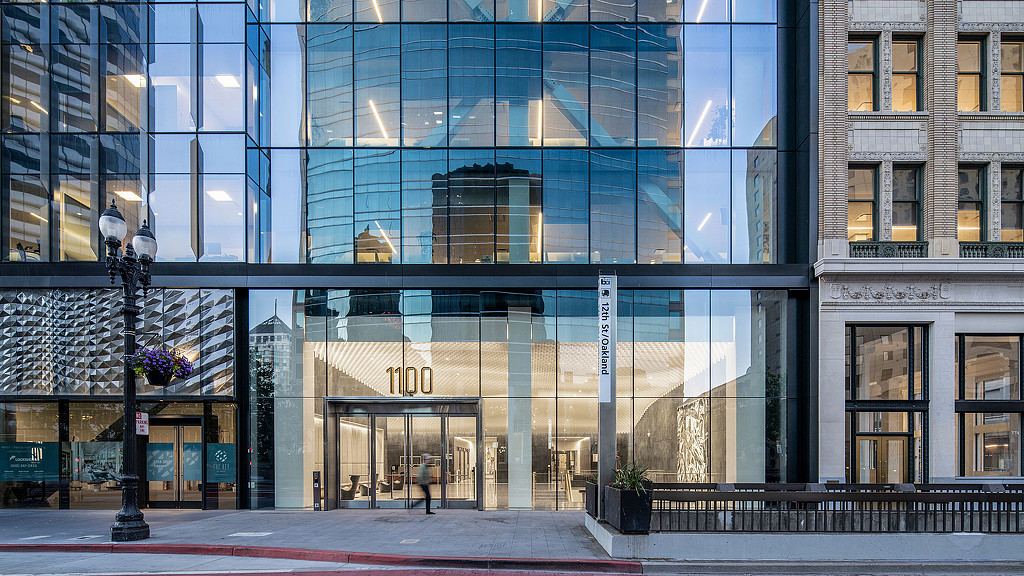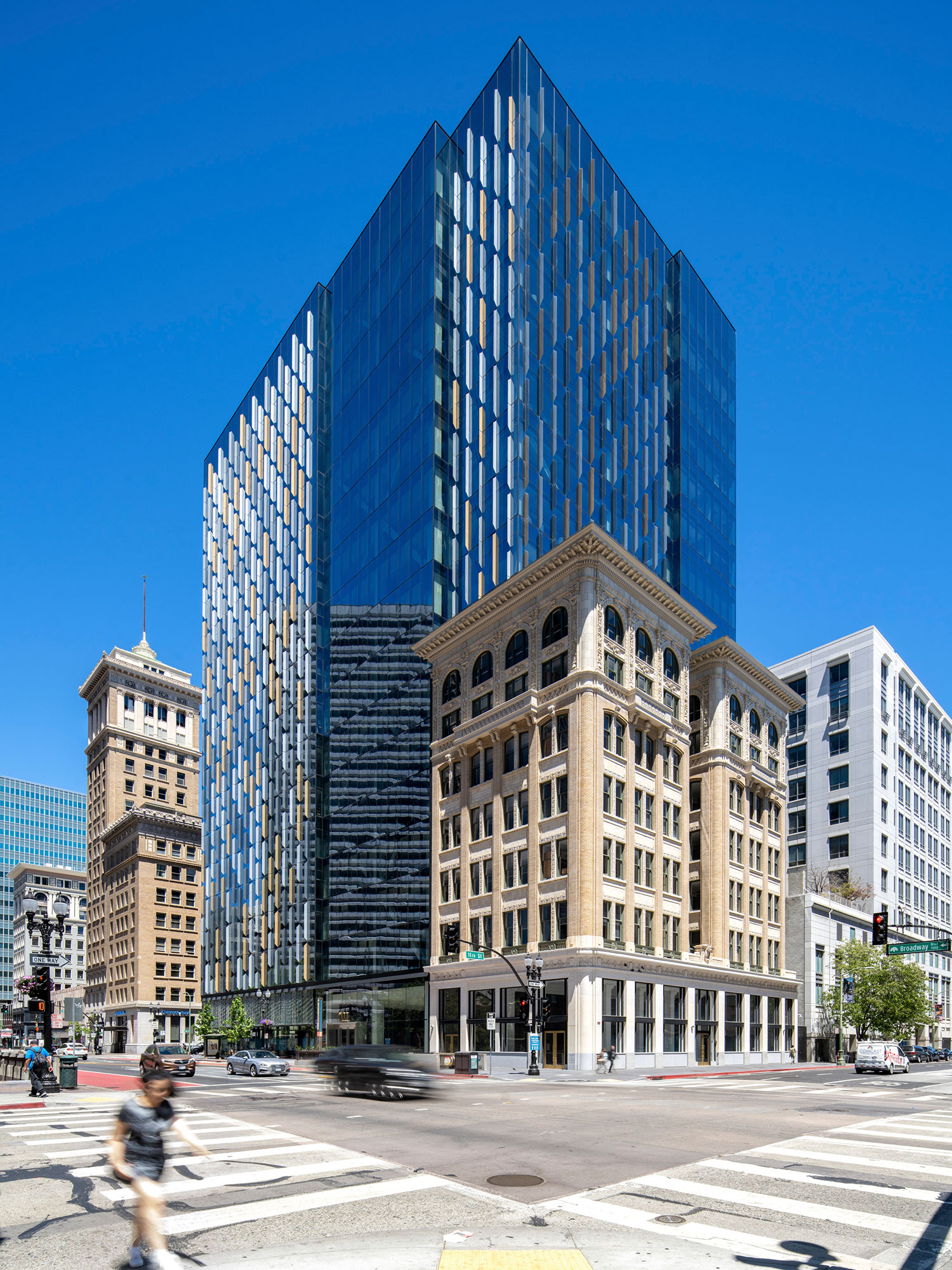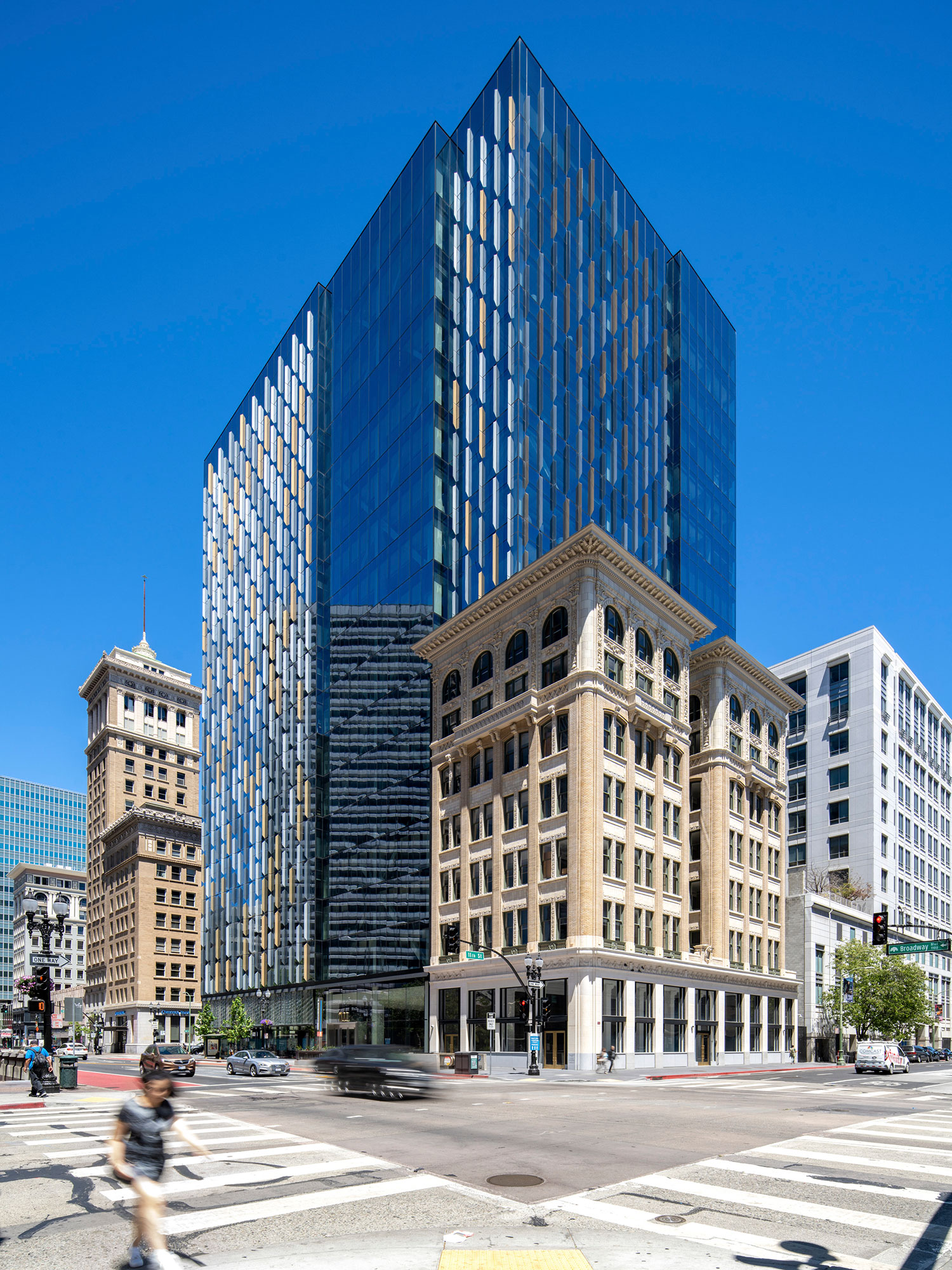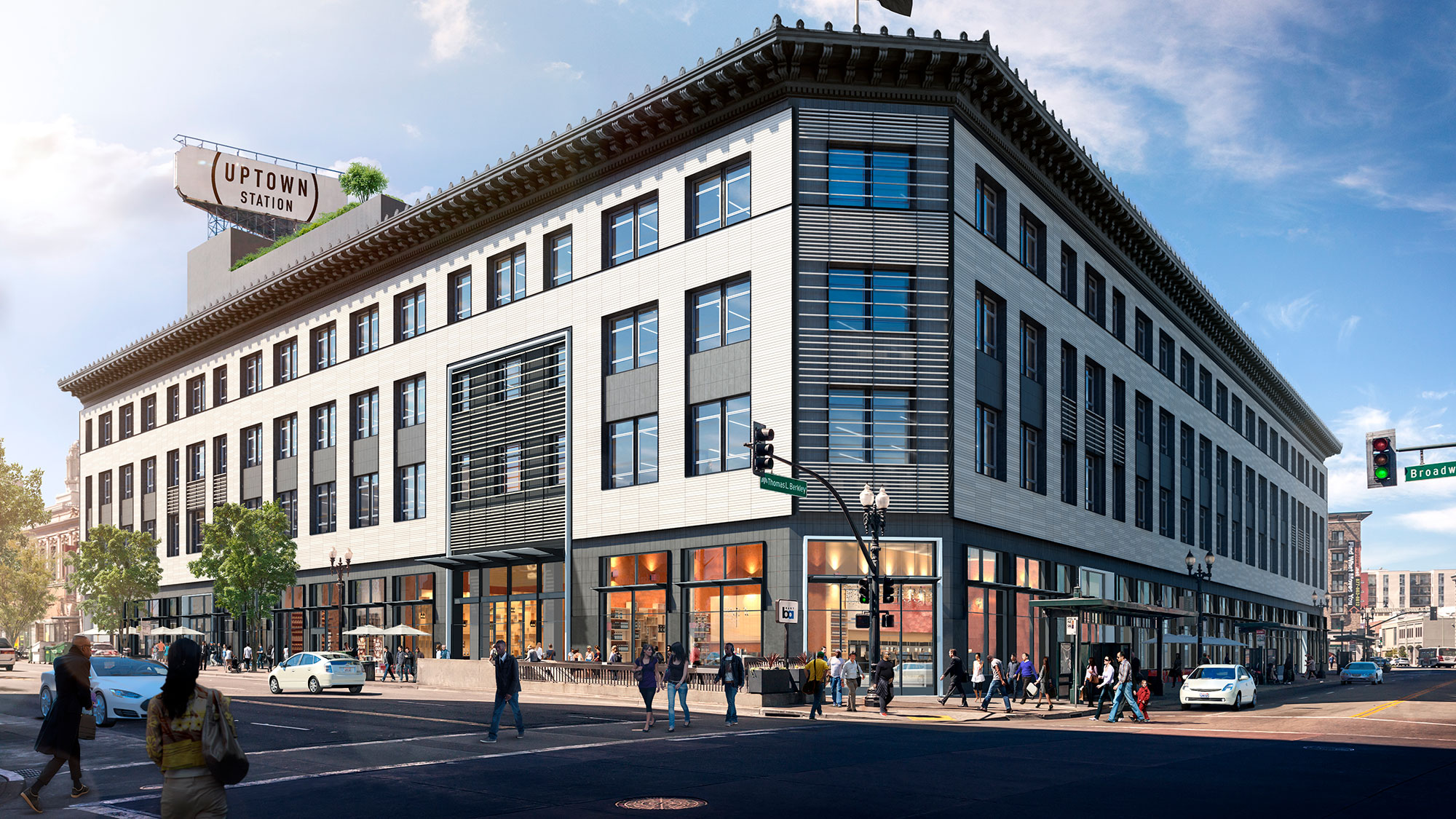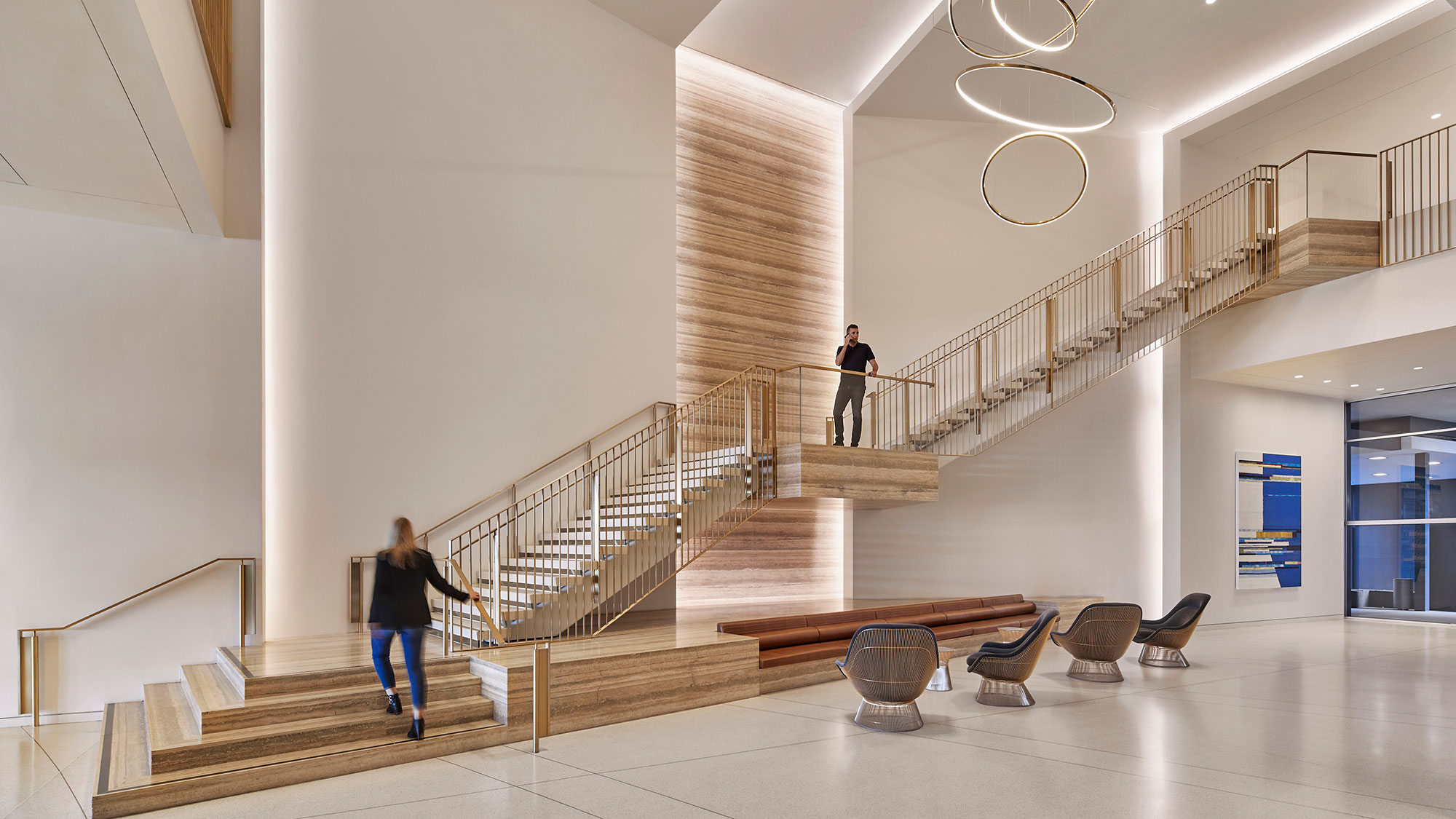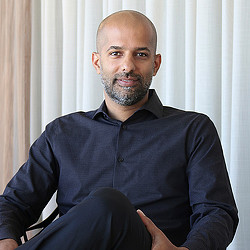Oakland’s Office Space Resurgence: Stitching the Old With the New for a Resilient Future
April 08, 2022 | By Manan Shah
The city of Oakland is steeped in history and a rich architectural heritage. Yet, over time, recessions, earthquakes, real estate market dynamics, and time have left many of the city’s iconic structures dilapidated, blighted, vacant, or in disrepair. Today, Oakland is continuing the transformation of its downtown urban core, attracting stalwart Bay Area institutions, as well as office tenants from nearby San Francisco and Silicon Valley.
At the center of this demand are a series of historic commercial building renovations that are driving a resurgence for creative office space and civic life. By stitching together the old with the new, activating the ground floor public realm, and providing sought-after amenities that appeal to current and future tenants, we have an opportunity to breathe new life into downtown Oakland, preserving the city’s rich architectural history while creating a more resilient, sustainable future.
You can see this transformation playing out through the redevelopment of three renowned buildings that are central to the culture and history of downtown Oakland. These projects work within the rich existing urban fabric, repurposing and revitalizing key historic structures to make them relevant in today’s market while enhancing their connection to the public realm.
1100 Broadway: A reinvestment in Broadway
The Broadway corridor the heart of downtown, and 1100 Broadway is among the restoration projects helping to revitalize the district. Gensler seismically upgraded and expanded the dilapidated and historic Key System Building, a seven-story classic Beaux-Arts building originally built in 1911 that has been vacant since the 1989 Loma Prieta earthquake. The design connects the original structure to a new 18-story class-A office tower.
- Before Renovation
- After Renovation
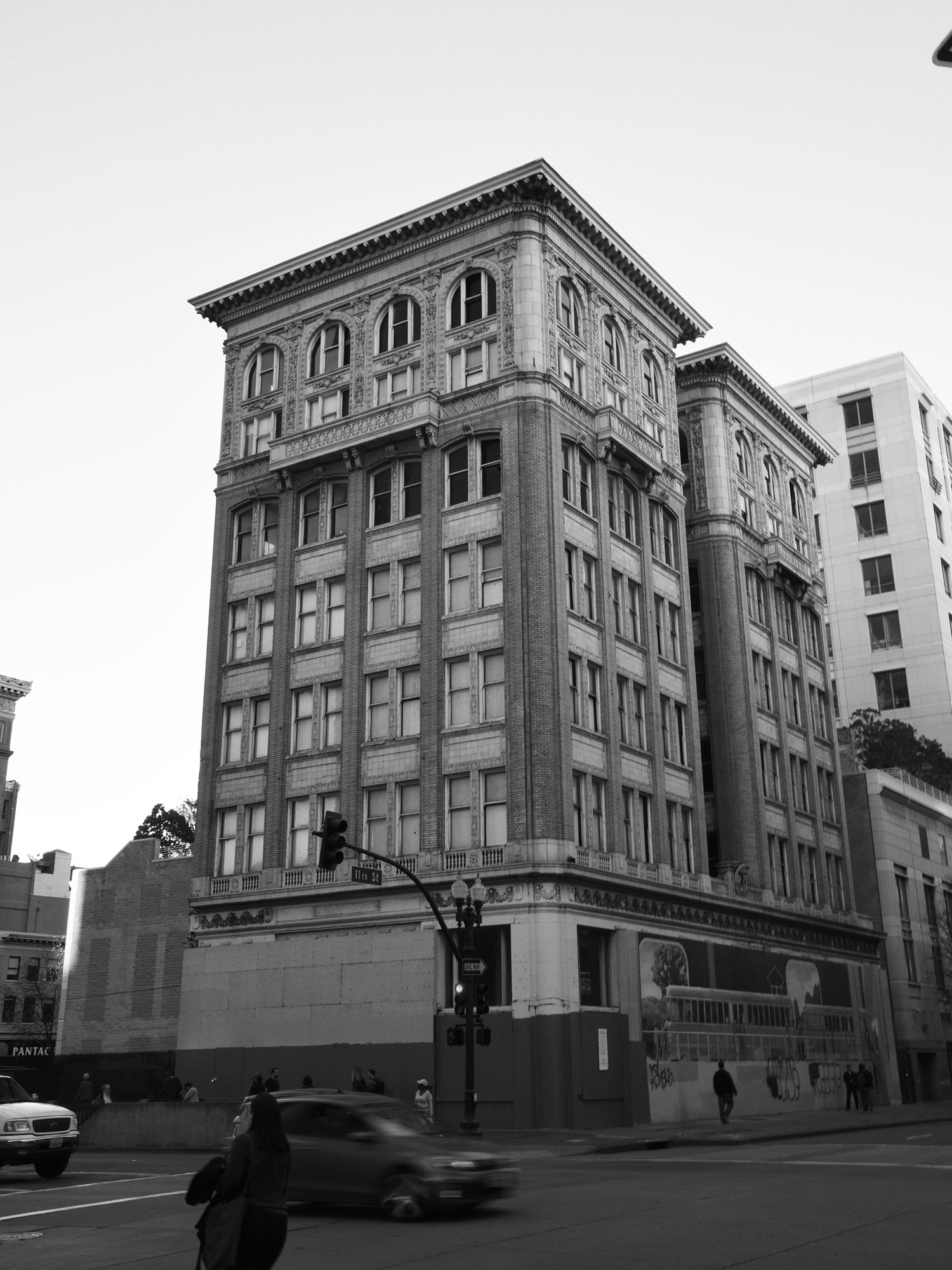
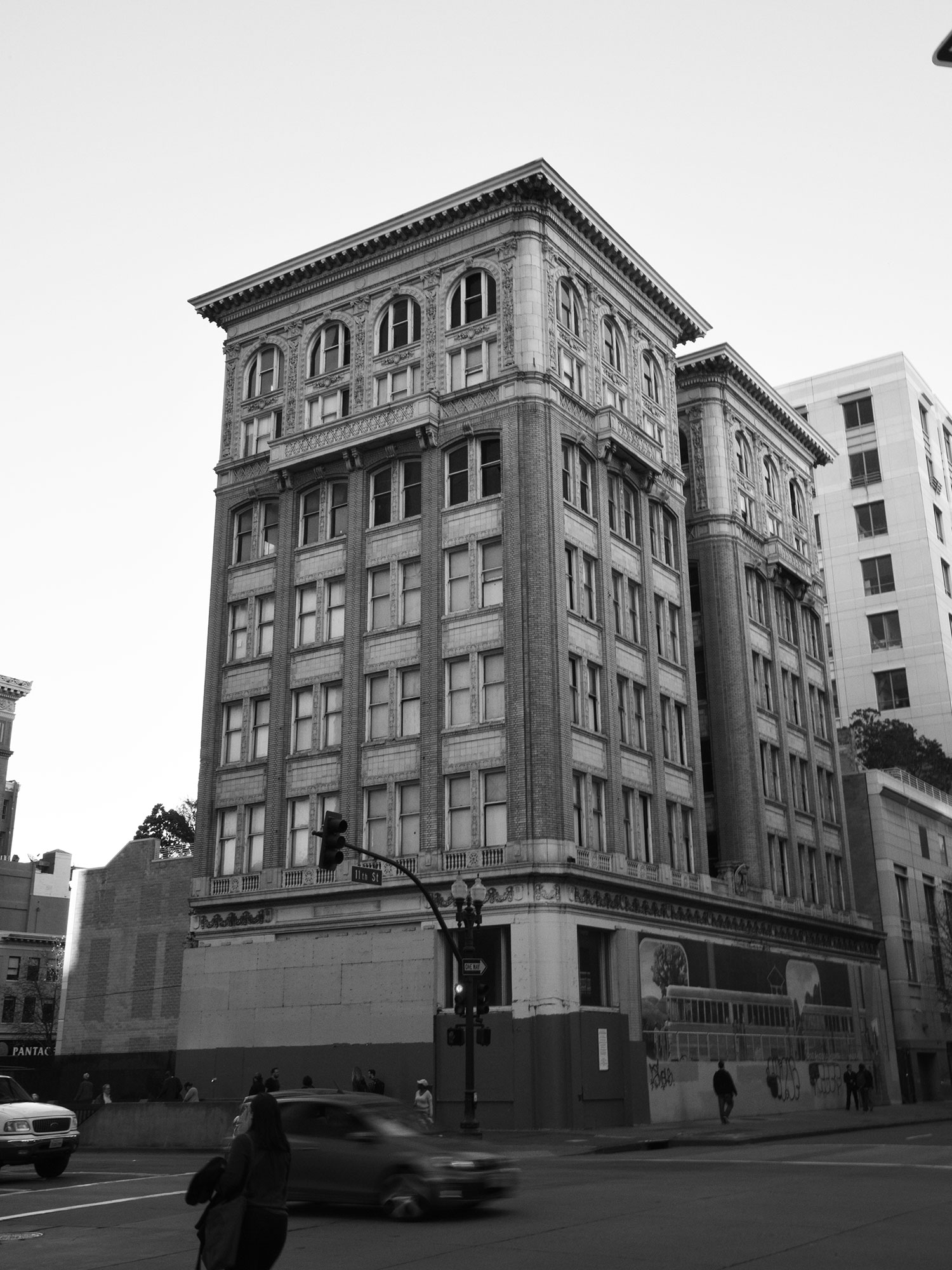
The character-defining glass fins on the outer envelope are embedded with metallic fabric, providing the new tower with a rich, textural façade that responds to the ornate exterior of the original building, while providing solar shading to reduce energy use. The lobby is refined and welcoming, with an art program that is visible from the street, inviting civic life into this iconic space and bringing life back to a long-abandoned block. The project signals the future of office space in Oakland — connecting our past with our present in ways that create spaces that are more resilient, adaptable, and experience focused.
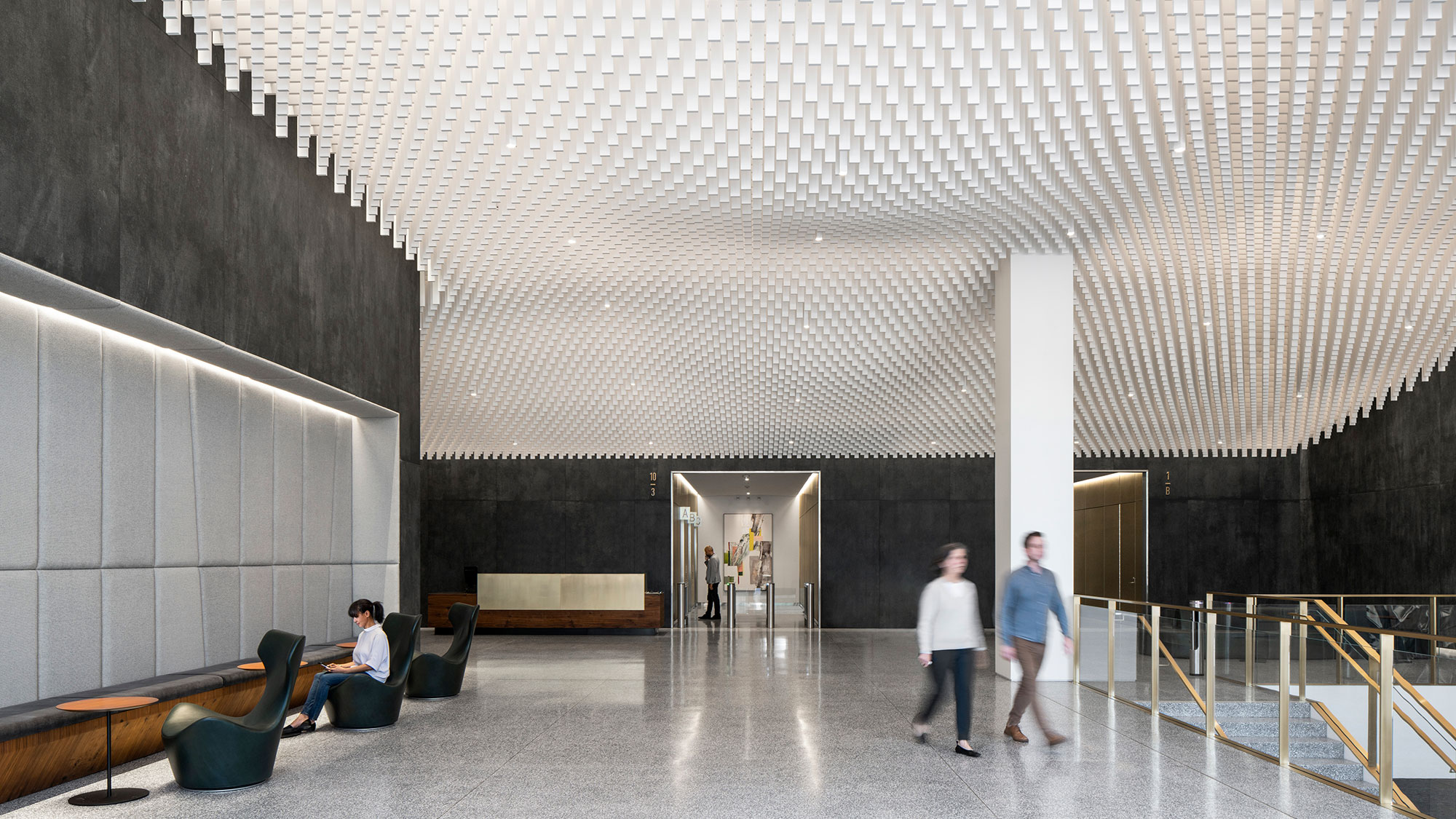
Uptown Station: Restitching the public realm
Widely credited as a springboard for the current age of downtown Oakland development, Uptown Station is another staple along the Broadway corridor. Formerly a department store, the building sustained major damage from the 1989 earthquake. The renovated building, now a new office and retail complex, restores the building's open and light filled character while injecting a fresh energy consistent with the neighborhood’s vibrant activities. The exterior renovation utilizes modern terracotta with refined detailing and leaving in place the building’s ornate existing cornice. Through the new central atrium, a pedestrian level shopping paseo connects Broadway Avenue with Telegraph Avenue, activating the street and engaging the community with new retail opportunities. With easy access to transit, large floorplates, and creative workspace, the project has served as a catalyst for Oakland’s office market, rooting the development as a hub for transit and civic life in the area.
- Before Renovation
- After Renovation
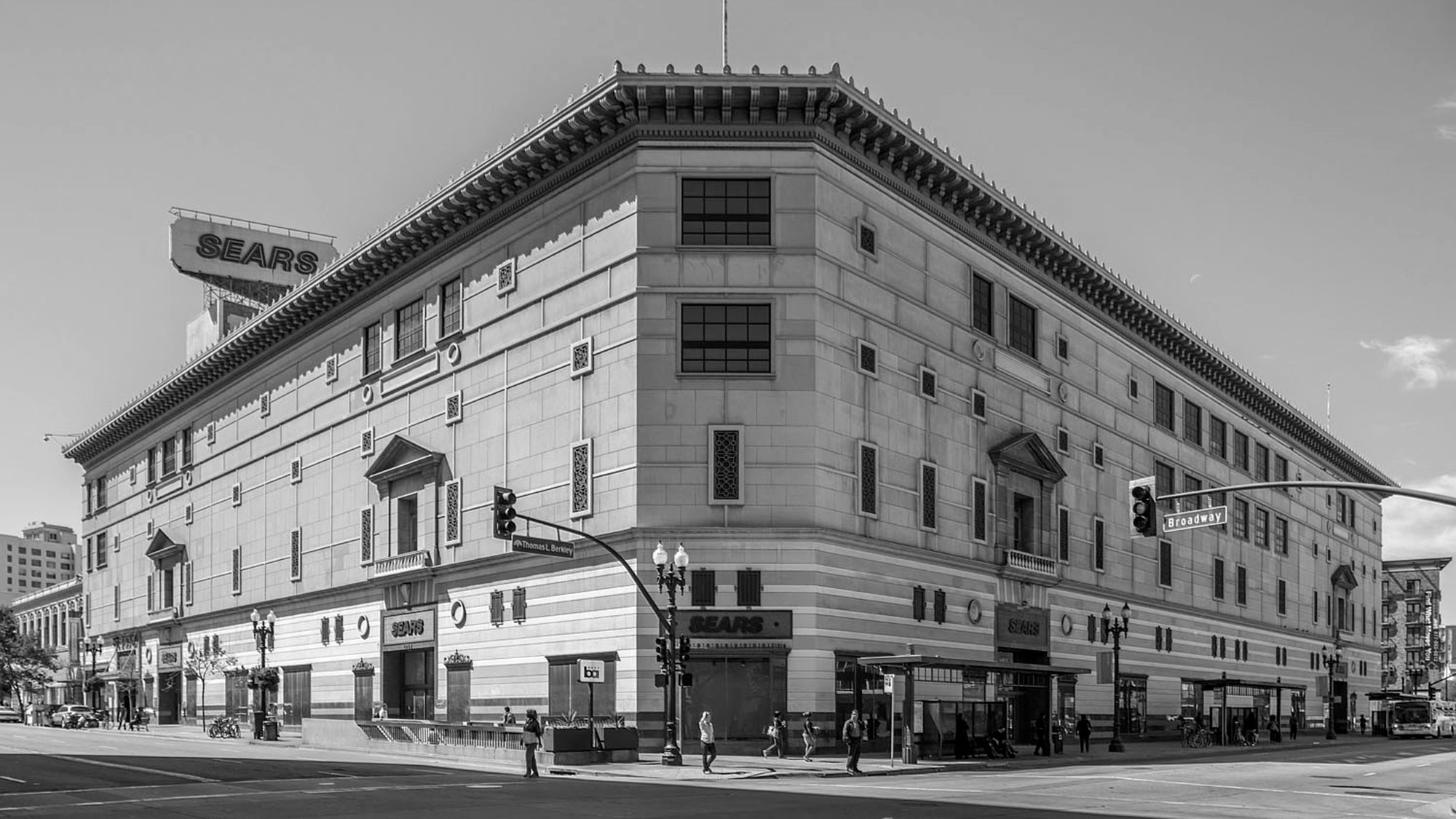

300 Lakeside: Opening the front door to a historical, natural landmark
Built in 1960 as the tallest tower on the West Coast, 300 Lakeside (formerly Kaiser Center) is a unique, prominent fixture in Oakland's skyline. Repositioning 300 Lakeside extends Henry J. Kaiser’s vision of Oakland as a center of innovation. Unwinding decades of previous renovations, the new lobby restores the building’s primary connection to Lake Merritt. The design of the new lobby and building amenities brings a timeless mid-century sense of restraint and detail back to the building. Currently under construction, the building is further being renovated to enhance the seismic resiliency of the structure and to bring the tenant spaces back to the top of the market.
- Before Renovation
- After Renovation
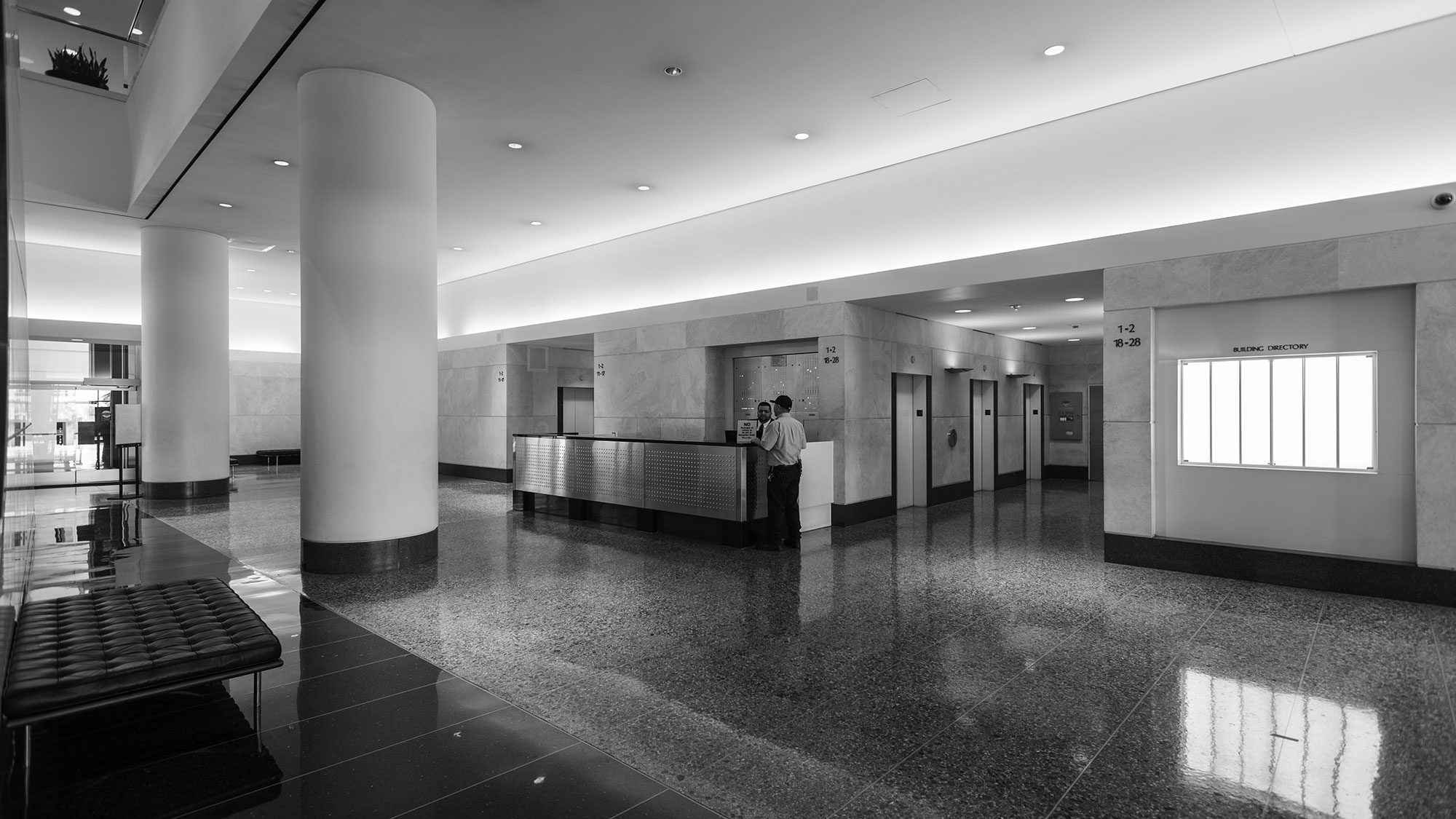

These three projects exemplify the role of Oakland’s historic fabric, not only in providing character, but also in being the attractor of new companies, new ideas, and in helping define the city’s future. Gensler has been in the East Bay for over 25 years and moved to Downtown Oakland seven years ago. Our approach to design is to understand the nature of each historic building, what drove its development, and what can we do to invest in it to restore its prominence as office buildings adapt to our evolving workplace needs.
If investors and developers continue to invest and rebuild projects like these, imbuing an authentic sense of place and community connection that seamlessly integrates the old and new, downtown Oakland’s future will be defined by a new kind of innovation that invests in our past as our path towards our bold new future.
For media inquiries, email .
